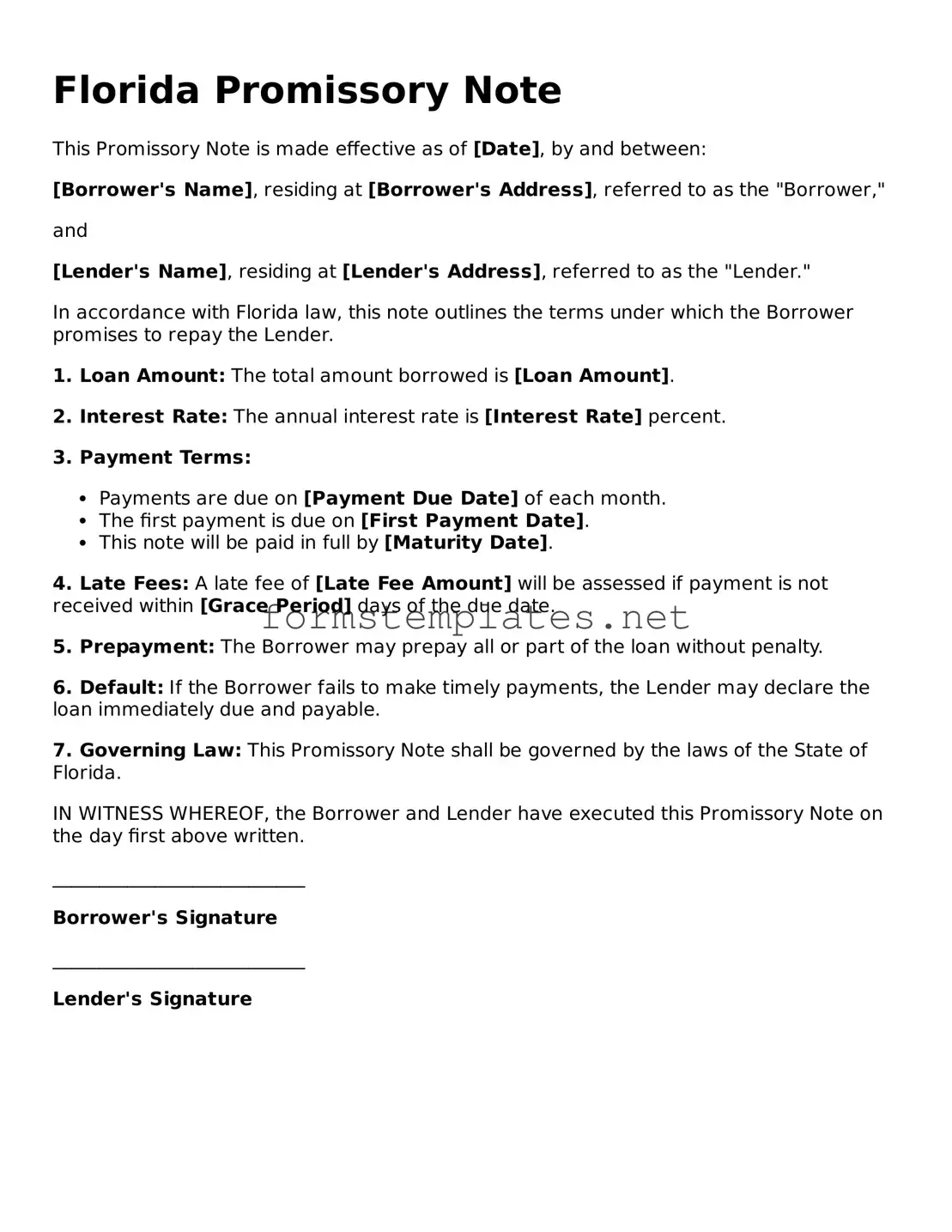Florida Promissory Note
This Promissory Note is made effective as of [Date], by and between:
[Borrower's Name], residing at [Borrower's Address], referred to as the "Borrower,"
and
[Lender's Name], residing at [Lender's Address], referred to as the "Lender."
In accordance with Florida law, this note outlines the terms under which the Borrower promises to repay the Lender.
1. Loan Amount: The total amount borrowed is [Loan Amount].
2. Interest Rate: The annual interest rate is [Interest Rate] percent.
3. Payment Terms:
- Payments are due on [Payment Due Date] of each month.
- The first payment is due on [First Payment Date].
- This note will be paid in full by [Maturity Date].
4. Late Fees: A late fee of [Late Fee Amount] will be assessed if payment is not received within [Grace Period] days of the due date.
5. Prepayment: The Borrower may prepay all or part of the loan without penalty.
6. Default: If the Borrower fails to make timely payments, the Lender may declare the loan immediately due and payable.
7. Governing Law: This Promissory Note shall be governed by the laws of the State of Florida.
IN WITNESS WHEREOF, the Borrower and Lender have executed this Promissory Note on the day first above written.
___________________________
Borrower's Signature
___________________________
Lender's Signature
